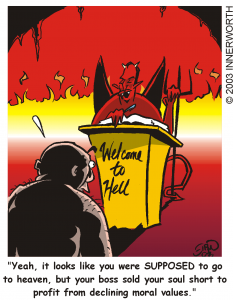When you ask most short-term traders if fundamental analysis ever plays a role in their decision-making, they usually roll their eyes. For the most part, this indifference is justified, particularly for the pure daytrader, since it is widely believed that fundamentals act too slowly to have a major influence on prices in the short term. The longer you stretch your time in a trade, however, the greater the potential risk. Measures should be taken to minimize this risk. For any trader, with a time horizon of more than a day trade, the release of earnings reports is a fundamental event that must be anticipated.
Earnings reports are one of the biggest catalysts for volatility in an individual stock. It is absolutely necessary to know when a company is due to report earnings and be ready to deal with the possible adverse effects. Ignoring the potential influence of an earnings report is like gambling without controlling risk. Look at some of the recent earnings-related disasters as evidence: MSFT lost nearly 7% of its value overnight when earnings failed to meet estimates and the stock has not shown any tendency to bounce higher. Shares of IBM lost 4%, and two weeks later, it has not recovered. The former highflier JCOM is one of the biggest earnings-related disasters. The night before JCOM reported earnings, the stock closed at 43.84. The next morning the stock opened at 36.71, and today, it is trading under 30. NTES is currently down over 14 points or 21%. Earnings, although up 97% from the same quarter a year ago, missed analysts’ estimates by two pennies.
The impact of these adverse events can be minimized. An obvious strategy is to stay away from trading stock until earnings reports are released. But there are other ways to deal with possible adverse news: Hedge some of the risk with options. When going long on a stock, for example, one can buy a protective put. (A put is a right, but not the obligation, to sell at a specified price for a specific time.) The protective put can be viewed as an insurance policy against an unforeseen earnings-related disaster. Should the price fall hard, you can sell at the specified price. As with insurance, if the price does not fall, you lose the premium you paid, but you also protected yourself against a potential adverse event. (You can similarly use a protective call with a short position.)
Another way to have exposure to stock before earnings are due is to forgo buying the stock altogether. Instead, buy a call option on the stock. Suppose you want to go long, but also want to reduce your risk should the reported earnings fail to meet expectations. Buy call options, and if the price goes up as you had anticipated, you could sell the options for a profit. But if the stock implodes after earnings are released, the worst you will do is lose the premium you paid; it can never get any worse. Because the premium for the option is a small fraction of the amount of capital you would be required to put up to control the stock outright, your risk is defined. There are other ways to lose your premium, however. Besides the risk of the stock going down, there is the risk of time value in an options position. If the underlying stock does not move higher, you could still lose the money you paid for the option as time decay eats into its value.
Essentially, the best way to deal with an upcoming earnings report is to avoid overnight exposure, but if you feel as though you must have a position ahead of an earnings report, be sure to minimize the risk. Whatever course you take, don’t ignore this potential adverse event. Earnings reports usually have a significant impact on prices. Don’t be caught off-guard. Develop a plan for controlling losses should the market go against your expectations.

